*This is the first of two blog posts in which I reflect on my process, thus far.
I knew, at the outset of my fellowship, that I wanted to use the Truck to engage visitors in D.C., and to do so in an unexpected way—something that involved experimenting with installation art in and on the Humanities Truck. I’ve written about participatory art in the past, and I’m generally interested in the way that artistic elements can enhance public history engagement.
Most broadly, my goals for this project have been twofold: 1) an exchange of ideas or information between visitors and Washingtonians and 2) a way to collect information and gain insight about where visitors get their ideas about the city, and how those impressions compare with their actual experiences. But, it’s taken a while to work out how to actually make that happen. The biggest challenge has been trying to figure out what visitors to the Truck would get in exchange for participation—that is, what would make stopping and talking with me worth their while, on one hand—and what they would get out of it, on the other. This is a key tenet of any participatory design, and a hard one to get right.
My initial idea was to do an exhibit about visitors to Washington inside the Truck, but I worried that might not be striking enough to attract tourists—who might be doing nothing but going to exhibits during the visit. I also realized that this was perhaps the most predictable and, for me—a public history professor—the easiest. It’s a key way that many historians engage publics, but it can also be a one-sided interaction: here’s my research, look at it! That seemed antithetical to what I was hoping to accomplish, and to the spirit of the Truck itself—since all of my community collaboration would be coming in the truck interaction (as opposed to, say exhibits which are collaborative from the outset), I needed to make it truly reciprocal.
Thinking more about what kinds of experiences tourists might be looking for, I decided to experiment with the creation of memories and social media content—in other words: a photo opportunity. I decided to create a visual that tourists might want to engage with as part of their visit. One that would look like one thing but be something else altogether (this is a tenet of a lot of conceptual and installation art—it plays with familiar forms to move the audience to new perspectives).
My first idea was to cover the outside of the truck with paper cherry blossom flowers, and the inside with red oak leaves—the official tree of D.C. My plan was to ask Washingtonians to write questions for tourists on the cherry blossoms, and messages for them on the red oak leaves. I used AI imaging to make mock-ups, ordered some materials online and started to figure out how I would attach all of the flowers to the Truck. I’m proud to say that I produced a workable prototype using some craft foam, fishing wire, and the Truck’s magnetic hooks, but as soon as I actually started thinking about how it would look (and—since it was February, started seeing a lot of exactly the same photo-op around town), I started to cool on the idea—it just didn’t seem very exciting anymore.
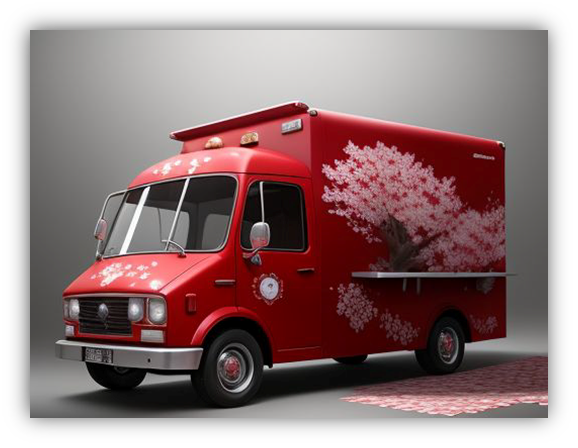
I used A.I. to try to imagine what my Truck installation could look like
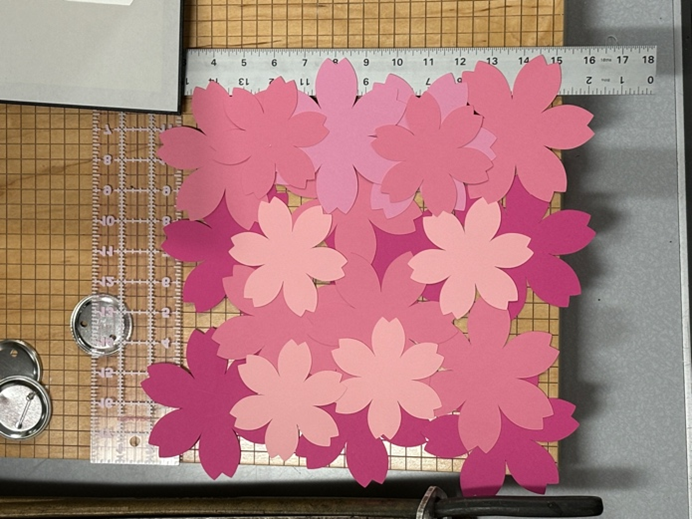
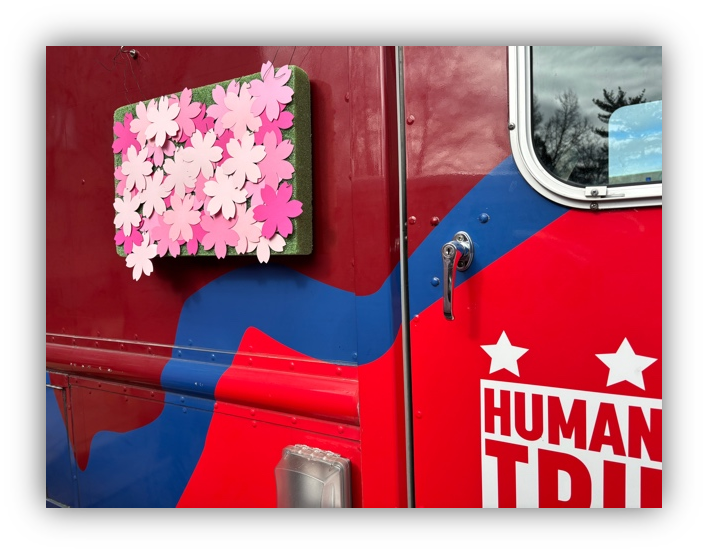
But when I actually fabricated a prototype and got it mounted on the Truck, it started to feel less exciting…even though I was proud of myself for figuring out how do it.
Look around for other ideas, I realized that tourist materials (postcards, brochures, maps—the kinds of things people gather on trips and then feel bad about throwing away) were being sold, very inexpensively, on eBay. I started to like the idea of using—instead of cherry blossom and red oak leaves—these materials for tourists and Washingtonians to write messages to each other on. So, I bought some lots, and tried to think about how to put them on the Truck in a visually interesting way. I had a lot of duplicate tourist materials, so I experimented with washing them with paint, cutting them into pieces, writing on them using different markets, pencils, and crayons, and crumpling them up and collaging. Ironically, I’d seen a lot of them before through previous archival research, and (after getting over feeling really bad about this!), I started to get a kick out of cutting up copies of materials I’d only ever handled, very carefully, in their archives. I also came across brochures and postcard images I remembered from growing up in D.C. in the 80s and the 90s, so another nice byproduct of the process was thinking about, in new ways, my own relationship to my larger research project. I didn’t produce anything really good-looking, but it turned out to be a good way to figure out the parameters of my own capacity, as well as spend some time with these materials in ways that I don’t get to usually.
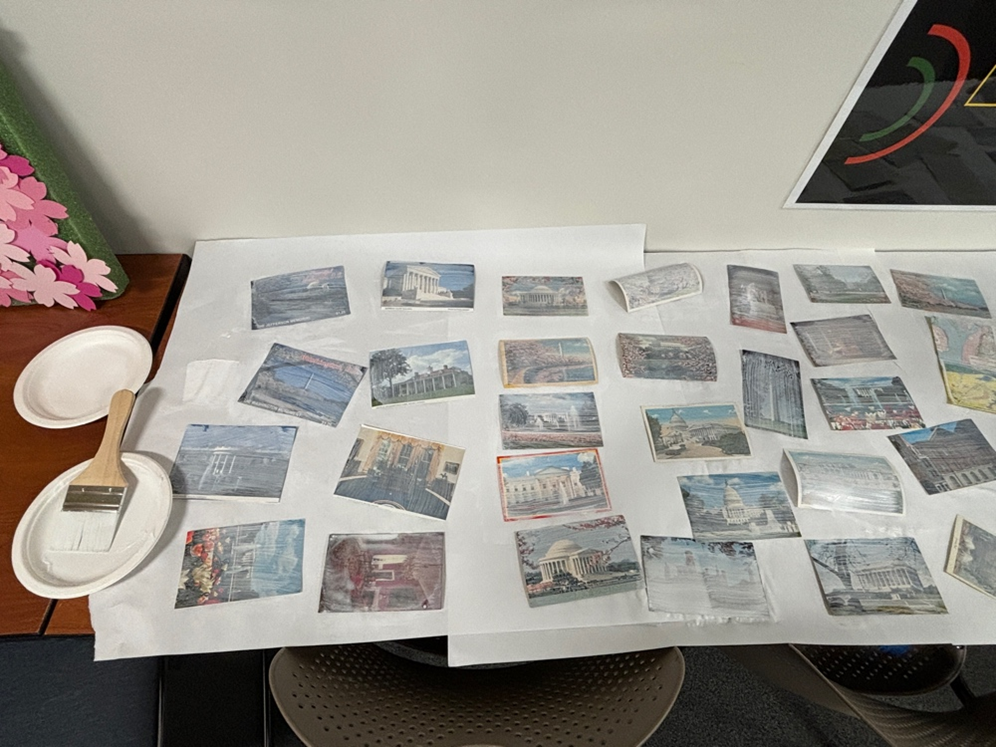
It was very satisfying to work with these postcards in a new way! The historian in me felt bad about cutting and painting vintage postcards, but it ended up helping me think through how people actually interacted with them, and how I wanted to use them in my project!
Because of the way I was working with them, I began thinking about all of these maps, brochures, and materials in their original contexts, and trying to imagine how they had been bought from museums, shops, and stands in D.C., used for the duration of the visits, and then put away and forgotten, until they ended up for sale on the internet—sometimes even mailed to me together in a paper bag from a tourist shop or site.
And so, I came to what I think is my best idea so far: to turn the Truck into a kind of Visitor Information Center, but one that facilitates the exchange of information, which was my original goal. This seemingly checked all of the boxes: it would be a cool way to get these materials circulating again, it would experiment with an institutional and aesthetic form by questioning it, and it would be a novel way to engage visitors.

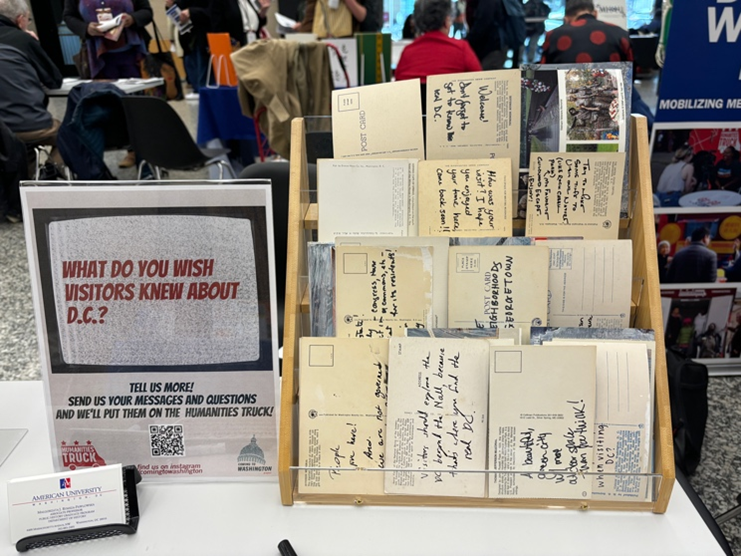
Here’s my display at the D.C. History Conference—as you can see, I got a lot of great engagement from conference-goers—they wrote messages and questions on the postcards.
I debuted my project (now called VISITOR: INFORMATION?) at the D.C. History Conference this past weekend—I set up a display in the lobby of the Martin Luther King Jr. Public Library and invited conference attendees and passersby to write messages and questions for tourists on my vintage postcards. I also made an online form and am hoping to do a few more pop-ups before tourist season gets underway, so I can collect more materials. As for the installation itself, I don’t have all of the angles worked out yet, but have a lot of materials and ideas, and I’m looking forward to flexing my newly-rediscovered creative, ideation, and fabrication skills!

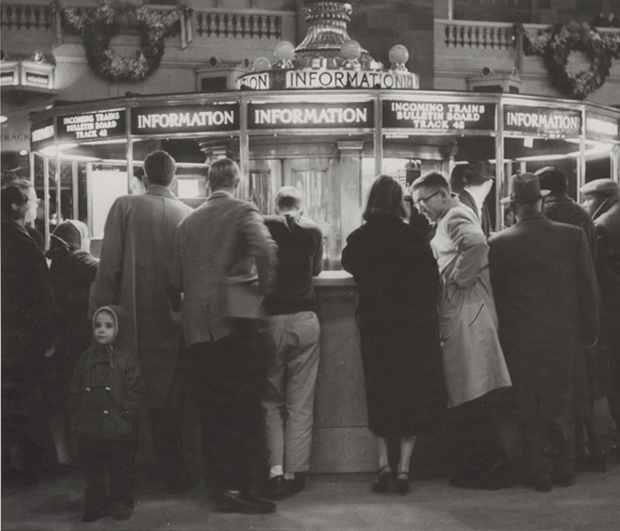
Some of the reference images I’m currently working with—this summer, I’ll be turning the Truck into something like this—and sharing Washingtonians’ questions and messages with D.C.’s tourists!

